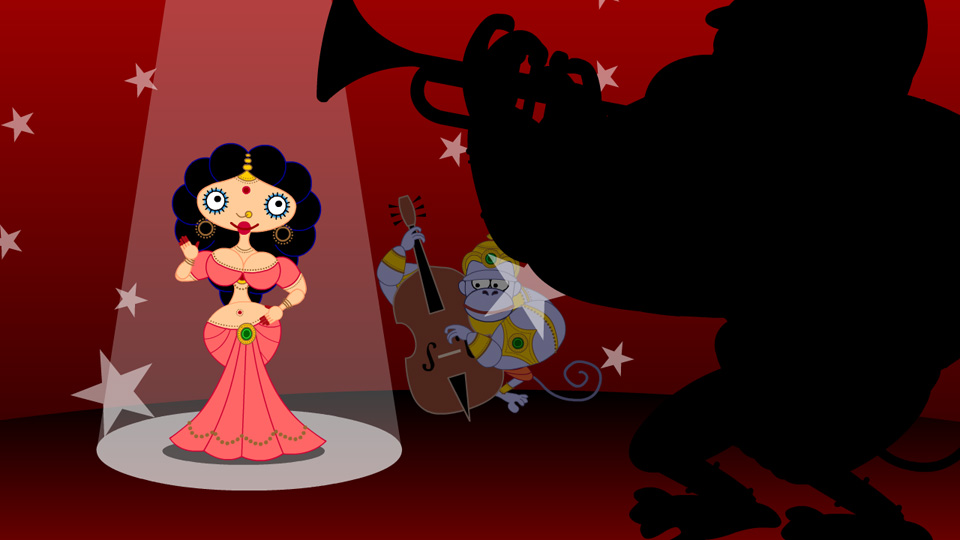| Wiki |

Why I can't "just swap out" the Annette Hanshaw songs in "Sita Sings the Blues":The songs themselves inspired the film. There would be no film without those songs. Until I heard them, the Ramayana was just another ancient Indian epic to me. I was feebly connecting this ancient epic to my own experiences in 2002. But the Hanshaw songs were a revelation: Sita's story has been told a million times not just in India, not just through the Ramayana, but also through American Blues. Hers is a story so primal, so basic to human experience, it has been told by people who never heard of the Ramayana. The Hanshaw songs deal with exactly the same themes as the epic; but they emerged completely independent of it. Their sound is distinctively 1920's American, and therein lies their power: the listener/viewer knows I didn't make them up. They are authentic. They are historical evidence supporting the film's central point: the story of the Ramayana transcends time, place and culture. What is this story? Sita is a goddess/princess/woman utterly devoted to her husband Rama, the god/prince/man. Sita's story moves from total enmeshment and romantic joy ("Here We Are," "What Wouldn't I Do For That Man") to hopeful longing separation ("Daddy Won't You Please Come Home") to reunion ("Who's That Knockin' At My Door") to romantic rejection ("Mean to Me") to reconciliation ("If You Want the Rainbow") to further rejection ("Moanin' Low," "Am I Blue") to hopeless longing ("Lover Come Back to Me,") back to love - this time self-love ("I've Got a Feelin' I'm Fallin'"). Sita's role is to suffer, especially through loving a man who rejects her. Women especially connect emotionally to her story and these emotions are clearly expressed in songs. As Nabaneeta Dev Sen writes in "Lady sings the Blues: When Women retell the Ramayana":
Sen is talking about the songs of Indian village women, but she could just as easily been talking about American Blues. That is the point of Sita Sings the Blues: we all struggle with this story, which connects humans through time, space and culture, whether we're aware of it or not. Just as the Ramayana has mostly been written down and controlled by men, the songs in Sita Sings the Blues were mostly written by men; but sung by a woman - Hanshaw - they pack an emotional wallop and express a woman's voice. The synchronicity of the Hanshaw songs and Sita's story is uncanny. This impresses audiences and allows the film's point to be made: the story of the Ramayana transcends time, place and culture. Because the songs feature an authentic voice from the 1920's, they demonstrate that this story emerged organically in history. New songs composed by the director, while they could be entertaining, could not make that point. They would be a mere contrivance, whereas the authentic, historical songs give weight to the film's thesis. They are in fact the basis of the film's thesis, irrefutable evidence that certain stories - like the story of Sita and Rama - are inherent to human experience.--Nina Paley, 2008 __________________ "Using something that already exists demonstrates that
|

 Sita Sings the Blues by Nina Paley is licensed under a Creative Commons Attribution-Share Alike 3.0 United States License. Based on a work at www.sitasingstheblues.com. Permissions beyond the scope of this license may be available at http://www.sitasingstheblues.com/license.html. |